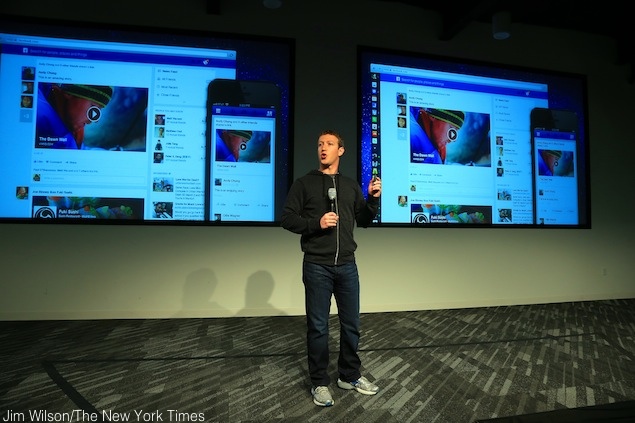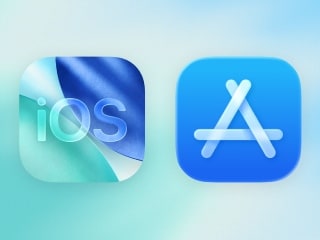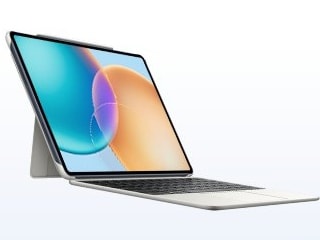- Home
- Social networking
- Social networking News
- Facebook shows off its redesign
Facebook shows off its redesign
By Somini Sengupta, The New York Times | Updated: 8 March 2013 09:44 IST

Click Here to Add Gadgets360 As A Trusted Source

Advertisement
Facebook announced on Thursday a substantial redesign of its News Feed, the front page that users see when they access the service.
Mark Zuckerberg described the new News Feed as a "personalized newspaper" that is more visual and allows users to choose the topics they're most interested in. The images and links to articles are bigger, making it easier to see on mobile screens.
"This design reflects the evolving face of News Feed," Mr. Zuckerberg said at a news conference at the company's headquarters here in Silicon Valley.
The redesign does not change anything about the filtering algorithm that Facebook uses to select what shows up on a user's News Feed.
But users will now be able to drill down into topic-specific news feeds - one for music, another for photos, another for the publications, celebrities or brands they follow. That choice is aimed at addressing a concern raised by advertisers and content publishers like news sites: under the old system, it was difficult for their followers to see everything the companies have posted.
The redesigned News Feed was clearly inspired by the ubiquity of cellphones, particularly in how easy they make taking and sharing photos online. Mr. Zuckerberg said half of all posts on the News Feed now are pictures, up from 25 percent a year ago. The pictures will show up bigger in the new feed.
Facebook executives did not directly respond to whether this would mean more advertisements in the News Feed, but the redesign stands to benefit advertisers because the space for ads is bigger.
Julie Zhou, head of design at the company, also said advertising formats would become more visual. "Everything across the board is going to get this richer, more immersive design," Ms. Zhou said.
Facebook said it will begin rolling out the changes to the Web version immediately, with mobile apps to follow.
The makeover is aimed at both keeping users glued to the social network and luring more advertising dollars.
But they also reflect the tricky balance Facebook faces now that it is a public company: to keep drawing users to the site while not alienating them with more finely targeted advertisements, which is Facebook's chief source of revenue.
The pressures are acute, given Facebook's still anemic performance on Wall Street. It came out of the box last May with an extraordinarily high valuation of $38 a share, which slumped to half last fall, and has remained for the most part under $30. In midday trading on Thursday, the stock was at about $28 a share.
The social networking giant has tweaked its News Feed over the years. Since 2009, Facebook has filtered what every user sees on the News Feed, based on the wisdom of its proprietary algorithm, called Edge Rank, which determines which posts a particular user is likely to find most interesting.
In 2010, it allowed users to chronologically filter the contents of the scrolling feed. The next year, it introduced a separate right-hand-side ticker - Twitter-esque, some said - of everything that every "friend" and brand page had posted.
© 2013, The New York Times News Service
Mark Zuckerberg described the new News Feed as a "personalized newspaper" that is more visual and allows users to choose the topics they're most interested in. The images and links to articles are bigger, making it easier to see on mobile screens.
"This design reflects the evolving face of News Feed," Mr. Zuckerberg said at a news conference at the company's headquarters here in Silicon Valley.
The redesign does not change anything about the filtering algorithm that Facebook uses to select what shows up on a user's News Feed.
But users will now be able to drill down into topic-specific news feeds - one for music, another for photos, another for the publications, celebrities or brands they follow. That choice is aimed at addressing a concern raised by advertisers and content publishers like news sites: under the old system, it was difficult for their followers to see everything the companies have posted.
The redesigned News Feed was clearly inspired by the ubiquity of cellphones, particularly in how easy they make taking and sharing photos online. Mr. Zuckerberg said half of all posts on the News Feed now are pictures, up from 25 percent a year ago. The pictures will show up bigger in the new feed.
Facebook executives did not directly respond to whether this would mean more advertisements in the News Feed, but the redesign stands to benefit advertisers because the space for ads is bigger.
Julie Zhou, head of design at the company, also said advertising formats would become more visual. "Everything across the board is going to get this richer, more immersive design," Ms. Zhou said.
Facebook said it will begin rolling out the changes to the Web version immediately, with mobile apps to follow.
The makeover is aimed at both keeping users glued to the social network and luring more advertising dollars.
But they also reflect the tricky balance Facebook faces now that it is a public company: to keep drawing users to the site while not alienating them with more finely targeted advertisements, which is Facebook's chief source of revenue.
The pressures are acute, given Facebook's still anemic performance on Wall Street. It came out of the box last May with an extraordinarily high valuation of $38 a share, which slumped to half last fall, and has remained for the most part under $30. In midday trading on Thursday, the stock was at about $28 a share.
The social networking giant has tweaked its News Feed over the years. Since 2009, Facebook has filtered what every user sees on the News Feed, based on the wisdom of its proprietary algorithm, called Edge Rank, which determines which posts a particular user is likely to find most interesting.
In 2010, it allowed users to chronologically filter the contents of the scrolling feed. The next year, it introduced a separate right-hand-side ticker - Twitter-esque, some said - of everything that every "friend" and brand page had posted.
© 2013, The New York Times News Service
Comments
Get your daily dose of tech news, reviews, and insights, in under 80 characters on Gadgets 360 Turbo. Connect with fellow tech lovers on our Forum. Follow us on X, Facebook, WhatsApp, Threads and Google News for instant updates. Catch all the action on our YouTube channel.
Further reading:
Facebook
Related Stories
Popular on Gadgets
- Samsung Galaxy Unpacked 2025
- ChatGPT
- Redmi Note 14 Pro+
- iPhone 16
- Apple Vision Pro
- Oneplus 12
- OnePlus Nord CE 3 Lite 5G
- iPhone 13
- Xiaomi 14 Pro
- Oppo Find N3
- Tecno Spark Go (2023)
- Realme V30
- Best Phones Under 25000
- Samsung Galaxy S24 Series
- Cryptocurrency
- iQoo 12
- Samsung Galaxy S24 Ultra
- Giottus
- Samsung Galaxy Z Flip 5
- Apple 'Scary Fast'
- Housefull 5
- GoPro Hero 12 Black Review
- Invincible Season 2
- JioGlass
- HD Ready TV
- Laptop Under 50000
- Smartwatch Under 10000
- Latest Mobile Phones
- Compare Phones
Latest Gadgets
- OnePlus 15R
- Realme Narzo 90x 5G
- Realme Narzo 90 5G
- Vivo S50 Pro Mini
- Vivo S50
- OPPO Reno 15c
- Redmi Note 15 5G
- Redmi Note 15 Pro 5G
- Asus ProArt P16
- MacBook Pro 14-inch (M5, 2025)
- Infinix Xpad Edge
- OnePlus Pad Go 2
- Just Corseca Skywatch Pro
- Honor Watch X5
- Acerpure Nitro Z Series 100-inch QLED TV
- Samsung 43 Inch LED Ultra HD (4K) Smart TV (UA43UE81AFULXL)
- Asus ROG Ally
- Nintendo Switch Lite
- Haier 1.6 Ton 5 Star Inverter Split AC (HSU19G-MZAID5BN-INV)
- Haier 1.6 Ton 5 Star Inverter Split AC (HSU19G-MZAIM5BN-INV)
© Copyright Red Pixels Ventures Limited 2025. All rights reserved.

















